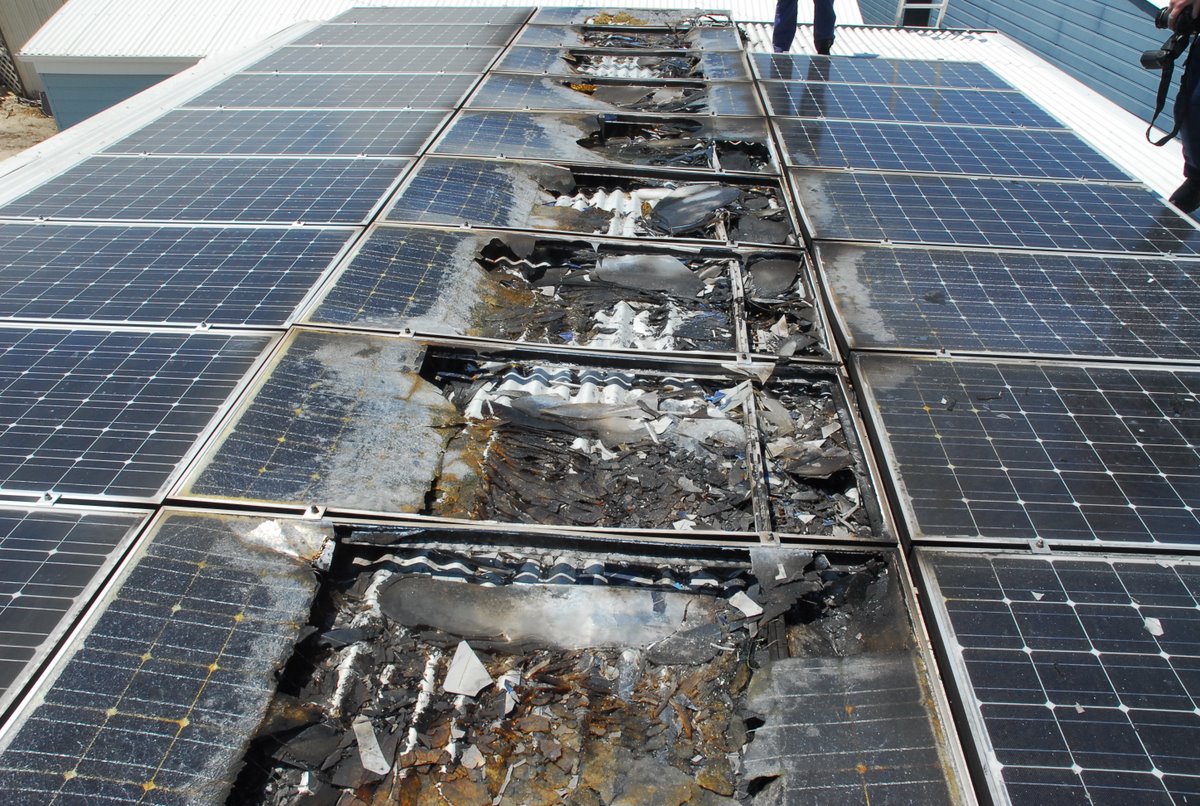For domestic use, solar panels are generally not a bad idea. That’s because domestic electricity consumption is generally pretty low: residential electricity consumption is about 20% of the total. And if solar output drops because of bad weather or night time, houses still have a grid connection to fall back on.
But electricity consumption is only a fraction of total energy consumption. If, as the Climate Cult demand, we electrify our entire societies, then we’re going to be in big trouble. Solar panels just aren’t going to cut it — even if we somehow cover the equivalent of the landmass of India with solar panels, as would be needed.
But even for household use, solar panel users tend not to take into account the environmental impact of mining and processing raw materials, and manufacturing the panels.
And nobody’s given much thought what happens to them when their useful lifetime is over.
But it’s a problem which will only grow more pressing as we’re hit with a tsunami of scrapped solar panels in just a few years.
Experts say billions of panels will eventually all need to be disposed of and replaced.
“The world has installed more than one terawatt of solar capacity. Ordinary solar panels have a capacity of about 400W, so if you count both rooftops and solar farms, there could be as many as 2.5 billion solar panels.,” says Dr Rong Deng, an expert in solar panel recycling at the University of New South Wales in Australia.
The problem is that solar panels have a lifespan of about 25 years. The really big surge in solar panel uptake in Australia started in 2011.
Which means that by the time a baby born today is a world-leading climate expert, we’ll be getting flooded with billions of scrap solar panels. It is, according to the rather ironically-named Ute Collier, deputy director of the International Renewable Energy Agency, “going to be a waste mountain”.
“We’re producing more and more solar panels – which is great – but how are we going to deal with the waste?” she asks.
It is hoped a major step will be taken at the end of June, when the world’s first factory dedicated to fully recycling solar panels officially opens in France.
ROSI, the specialist solar recycling company which owns the facility, in the Alpine city of Grenoble, hopes eventually to be able to extract and re-use 99% of a unit’s components.
Ooh! A whole one recycling company! We’re saved.
Note, too, the sophistry: “99% of a unit’s components”. This is a rhetorical gambit windfarm enthusiasts get away with all the time. 99% of the components, by part count, are mostly small electronics. In a wind turbine, just a fraction of the components — the turbine blades — account for the vast bulk of the mass.
In a solar panel, besides the electronics, much of the mass of the panel is in just three components: the aluminium frame, the glass, and the silicone solar cells. The cells can account for roughly 10% of the total mass of the panel.
But, while glass and aluminium are easily recycled, recycling the silicone cells is much more difficult. Unfortunately, the glass in solar panels is usually low quality stuff.
The glass recovered using those methods can be used to create tiles, or in sandblasting – it can also be mixed with other materials to make asphalt – but it cannot be used in applications where high-grade glass is required, such as the production of new solar panels.
Recyclying the more valuable components is much harder.
At ROSI’s high-tech plant in Grenoble, the solar panels are painstakingly taken apart to recover the precious materials inside – such as copper, silicon and silver.
Each solar panel contains only tiny fragments of these precious materials and those fragments are so intertwined with other components that, until now, it has not been economically viable to separate them.
But because they are so valuable, extracting those precious materials efficiently could be a game-changer, says [Nicolas Defrenne of French recycling group Soren].
Soren’s partner company ROSI is the only company to have scaled up such processes at all, but it still remains prohibitively expensive.
In the meantime, we’re barreling into a mountain of waste that’s mostly going into landfill.
In Europe, importers or producers of solar panels are responsible for disposing of them when they become expendable. And many favour crushing or shredding the waste – which is far cheaper.
BBC
Defrenne’s own company recycled just under 4,000 tonnes of French solar panels last year. Yet, last year alone 232,000 tonnes of panels were sold in France.
They better get cracking on a commercially-viable disposal and recycling method.

